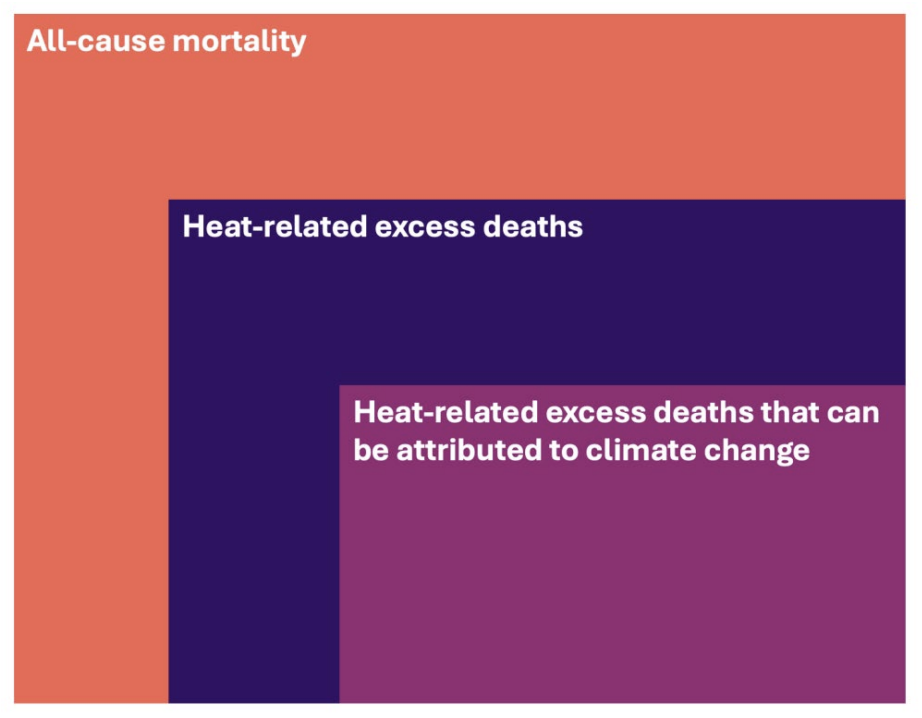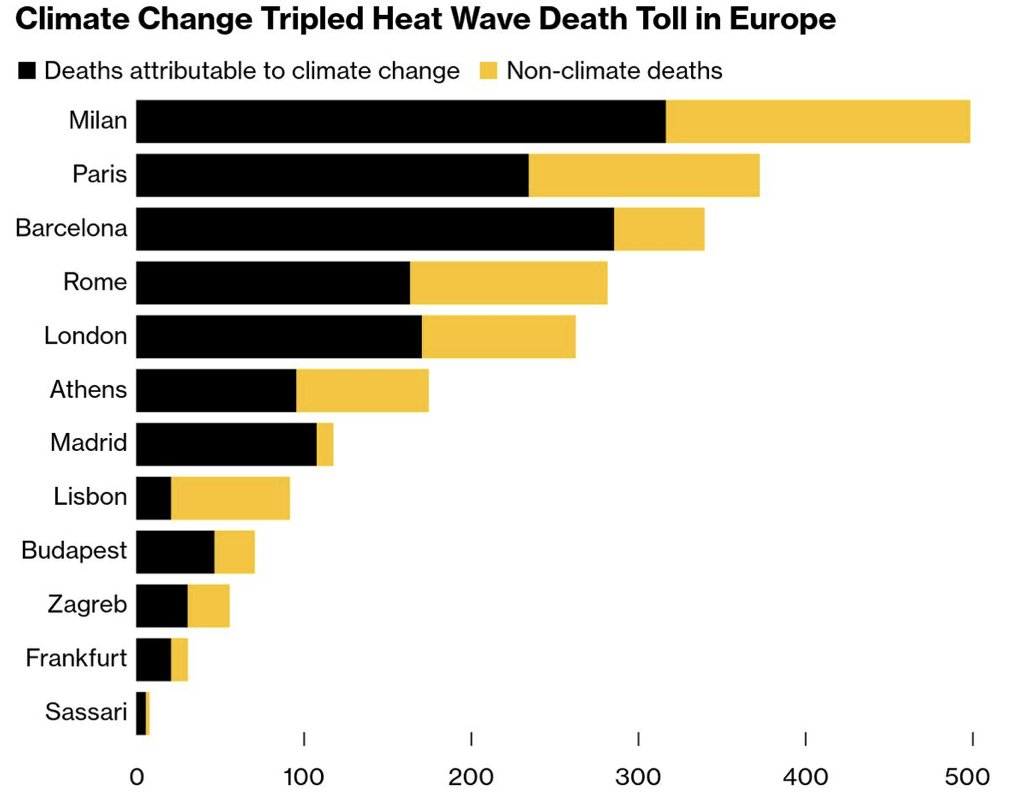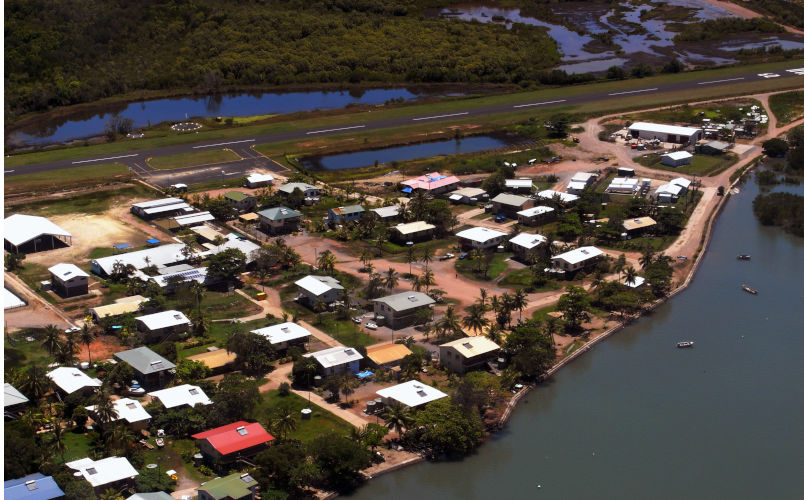Environment: Judge says advocate and protest to make government responsible for climate damage
July 27, 2025
Federal Court says Australian government not negligent in failing to protect Torres Strait Islanders from climate change. Human-induced climate change triples current European heatwave deaths but who is responsible for the harm and damage?
Federal Court says “No” to Torres Strait Islanders
Does the Australian Government have a legal obligation to protect Australians from harmful climate change? As has been widely reported, on July 15th a Federal Court judge clearly said ‘No’.
In October 2021, Uncle Pabai and Uncle Paul, residents of the Torres Strait Islands, filed a case (the Australian Climate Case) in the Federal Court. Hearings began in the Torres Strait in June 2023 and finished in Cairns in April 2024. Uncle Pabai and Uncle Paul argued (1) that the Federal Government has a legal responsibility to ensure that Torres Strait Islander Peoples are not harmed by climate change and (2) that by failing to prevent climate change and the severe damage that this is causing to the Torres Strait communities, the Government has negligently breached their duty of care to the Islanders. Uncle Pabai and Uncle Paul talk about the effects of climate change on their homelands and communities in this 4-minute video.
In addition to finding the Government negligent, the court was asked to require the Government to cut greenhouse gas emissions in line with the best available science to prevent further harm to the islands and communities.
Justice Wigney, who presided over the case, found that the Torres Strait Islanders had established that climate change was damaging the islands and the Islanders’ lives, and that previous Australian Governments had not taken the best available science into account when setting emissions reduction targets. He found, however, that the Government had not breached its legal duty to the Islanders. This has been widely reported as him saying that the Government does not have a responsibility to the Islanders in this regard. I am not a bush-lawyer and I have not read Justice Wigney’s full judgement but I did listen to his summary live. What I understood him to say, inter alia, was that previous court judgements have established that the Government does not have a duty of care in similar matters in the common law tort of negligence and he was bound by these precedents. Consequently, he was unable to find in favour of Uncle Pabai and Uncle Paul. (One of the clearer explanations of the findings that I’ve seen was in The Conversation.)
The case and judgement indicate that, as things currently stand, the Government does not have a legal duty (for instance, in the Constitution or legislation or common law, or a much-needed Bill of Rights) to protect the Islanders, or any other Australians, from the consequences of climate change. The only way left to establish a legal obligation on the Government is through political action and protest aimed at effecting legislative change, as the Judge himself commented. So, on to the next phase.
Who pays for the damage caused by climate change?
If I chuck a brick through your window, you and the law require me to be responsible for the cost of repairing the damage. This applies even if I accidentally kick a football through your window.
What about climate change? Are the people who cause climate change responsible for the cost of repairing the loss and damage caused by a heatwave or a cyclone or the rising sea that has been caused by or made more severe by climate change? For numerous reasons, this is far more complicated than a broken window. However, in response to the question “will it ever be possible to sue anyone for damaging the climate?”, it is claimed that with the evidence now available the answer is definitely “Yes”.
Two researchers assert that recent advances in climate science have established that “the scientific case for climate liability is closed”. First, it is possible to accurately connect specific emitters of greenhouse gases (GHGs) to the local manifestations of climate change (source attribution). Second, it is possible to connect local climatic changes (for instance, extreme weather events) to socioeconomic outcomes such as income loss, reduced agricultural yields, decreased economic growth and increased human mortality. These advances make it possible to link individual fossil fuel and GHG producers to actual harms caused by global warming.
The researchers claim that their ‘end-to-end attribution framework’ is rigorous, flexible, transparent and widely applicable. They illustrate it by calculating the global and regional economic losses caused by the increased intensity of heatwaves between 1991 and 2020 that were caused by the GHGs produced by the major oil companies over the previous 100 years. The study’s findings include:
- The global economy would have been US$28 trillion richer in 2020 were it not for the extra heat caused by the GHGs produced by the 111 companies considered;
- The five largest companies were responsible for over US$9 trillion of economic loss;
- Collectively, the five largest companies increased the intensity of four historic heatwaves between 1998 and 2012 by 0.08 oC (India), 0.11oC (France), 0.09 oC (Russia) and 0.27oC (N America);
- Chevron’s emissions were responsible for economic losses during these heatwaves of US$1.9, 3.0, 2.8 and 28.8 billion respectively;
- The loss of GDP per person between 1991 and 2020 caused by extreme heat attributable to the oil companies’ emissions was highest (a loss of 0.2% to 0.6%) in tropical regions (including Queensland).
While the authors have confidence in their work, they are clear that “the validity of the scientific case for climate liability does not mean that claims will succeed in court”.
“Essentially a rehash of all the major climate fallacies”
That’s the opinion of Bruce M Everett, board director of the CO2 Coalition, regarding the justifications provided for the ‘case closed’ argument by the authors of the previous titbit.
The Coalition was established in 2015 to educate “thought leaders, policy makers, and the public about the important contribution made by carbon dioxide to our lives and the economy”. One of the Coalition’s main claims is that “physics demonstrates that increasing greenhouse gases cannot cause dangerous warming, extreme weather or any harm [and that] there will be disastrous consequences […] if GHGs are reduced to Net Zero”. The Coalition’s Funding is largely provided by the Mercer Family Foundation, the Charles Koch Institute and fellow ultra-rich climate change-denying travellers (and Trump supporters and donors).
In line with the CO2 Coalition’s overall policy goal of increasing the amount of CO2 in the atmosphere, one of Everett’s main points is that the “direct benefits of CO2, such as enhanced crop growth and drought resistance when the world needs growing food supplies” are ignored.
In fairness, Everett’s short rebuttal makes many legitimate points, mostly recognised as important considerations by the two researchers, but they do not represent a compelling argument to dismiss the original proposition.
Climate change triples the European heatwave deaths
Anyone watching the news or with relatives in Europe will be aware that they are experiencing a prolonged heatwave, perhaps made more uncomfortable by it occurring a few weeks earlier than when heatwaves usually occur in Europe. The urban heat island effect results in residents of cities being particularly affected.
The persistent heat is caused by a ‘heat dome’, or high-pressure system, settling over Western Europe. This has trapped hot dry air beneath it and caused temperatures to keep rising over time, with serious consequences for the health of humans, ecosystems, businesses and economies.
The research reported above shows that it is possible to determine whether climate change has contributed to the origin, persistence and extreme temperatures of individual heatwaves. Up to now, however, assessments of attribution have been conducted almost exclusively retrospectively.
In what is claimed to be a first, researchers have conducted a rigorous, concurrent, rapid study of the climate change-induced increase in mortality observed in Europe over ten days of the heatwave in late June and early July. The study was conducted in twelve cities across Europe from Athens in the south-east to London in the north and Lisbon in the west.
A three-step approach was adopted to determine the underlying causes of the deaths in the twelve cities during the ten day period: counting (1) all the deaths, (2) all the heat-related excess deaths, and (3) the excess deaths that can be attributed specifically to the additional heat caused by human induced climate change (see diagram below).

The study found that climate change has increased the intensity of the heatwave and that the higher temperatures have caused an additional 1504 deaths, roughly 65% of the total heat-related deaths in the cities during this period (the proportion ranged from 23% in Lisbon to 92% in Madrid). More than 80% of the heat-related deaths occurred in people over 65 years.
On July 10th Bloomberg Green Daily summarised in a bar chart the number of deaths in each city that can be attributed to the additional heat caused by human-induced climate change (black bars in the chart below) and the deaths that were not caused by climate change (yellow bars).

The results emphasise the need for better urban planning to reduce the urban heat island effect (e.g., more greenspace, waterways and lakes and better home insulation), well-developed heat action plans (e.g., cooling centres and formal community support systems, particularly for older people and people with existing illnesses and disabilities) and early warning systems.
How to stop toads croaking on roads
The threats that migrating toads face from cats and cars is well illustrated in this very well produced and engaging 6-minute video. The explicit sex scenes, testosterone-driven male conflict and happy ending add to the charm. There’s an accompanying article that describes the production process, which included an encounter with the some rather (not surprisingly) sceptical Swiss police.

The views expressed in this article may or may not reflect those of Pearls and Irritations.

